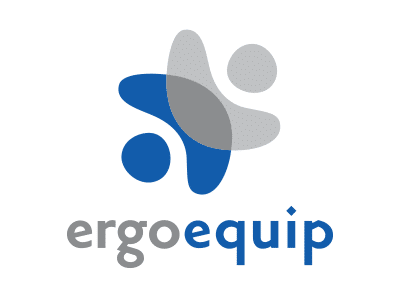The Future of Work: Embracing Hybrid Working for Enhanced Productivity

Hybrid working is revolutionising the way Australians work. As businesses across the country adapt to post-pandemic realities, the hybrid working model has emerged as a flexible, sustainable option that blends remote work with traditional office hours. In this blog, let’s explore the concept of hybrid working, its benefits for businesses and employees, and why it’s becoming the preferred work model for many organisations.
What is Hybrid Working?
Hybrid working refers to a flexible arrangement where employees split their time between working remotely and working in an office. This model provides employees with the autonomy to choose when and where they work, depending on their roles and the organisation’s needs. With technology bridging the gap between remote and in-office workers, hybrid working is making it easier to maintain collaboration and communication across teams.
The Rise of Hybrid Working in Australia
Over the past few years, hybrid work models have gained significant traction in Australia. The COVID-19 pandemic forced businesses to adopt remote working practices, demonstrating that many roles could be performed effectively outside the traditional office environment. Now, as businesses reopen their physical offices, hybrid working offers a middle ground that caters to both productivity and employee well-being.
Key Benefits of Hybrid Working
Flexibility and Work-Life Balance
One of the most significant benefits of hybrid working is its flexibility. Employees can organise their schedules to fit personal commitments, creating a better balance between their professional and personal lives. This improved work-life balance leads to increased job satisfaction and retention.
Increased Productivity
Contrary to initial concerns, remote work during the pandemic proved that employees could maintain or even increase their productivity when working from home. Hybrid working builds on this, allowing employees to choose where they are most productive. Some tasks may require a quiet home environment, while others may benefit from the collaborative atmosphere of an office. This flexibility can enhance overall efficiency and output.
Cost Savings for Businesses and Employees
A hybrid working arrangement can also result in cost savings for both businesses and employees. For organisations, reducing the need for large office spaces lowers overhead costs, such as rent, utilities, and maintenance. Employees, on the other hand, can save on commuting expenses and reduce the time spent travelling to and from work, which also benefits the environment by cutting down on emissions.
Improved Employee Well-being
The hybrid model has a positive impact on employee well-being. The flexibility it provides can reduce stress and burnout, as employees have more control over their time. Working from home can give them the space to focus on tasks without the typical distractions of an office, while in-office days offer opportunities for social interaction and collaboration, fostering a sense of belonging and team spirit.
Overcoming the Challenges of Hybrid Working
While hybrid working presents numerous advantages, it also comes with its challenges. Employers must address these issues to create an effective hybrid environment.
Maintaining Team Collaboration
One of the concerns with hybrid work is the potential for reduced team collaboration. To address this, businesses can invest in communication and collaboration tools such as Microsoft Teams, Slack, and Zoom. Regular team meetings, both virtual and in-person, can help ensure that remote employees remain engaged and feel connected to their colleagues.
Ensuring Fairness Across Remote and In-Office Employees
Another challenge is ensuring that remote workers and in-office employees have access to the same opportunities. Without proper measures, remote workers may feel excluded from important conversations or decisions made in the office. Creating clear guidelines and fostering an inclusive culture can help mitigate this risk.
Implementing Effective Performance Management
In a hybrid environment, performance management can become more complex. Employers must focus on results and output rather than the number of hours spent in the office. Setting clear goals, offering regular feedback, and using performance management tools can help ensure that all employees, whether working remotely or in the office, are evaluated fairly and consistently.
How to Create a Successful Hybrid Working Model
To implement a hybrid working model effectively, businesses need to follow a few key steps:
Define Clear Policies
Clearly defining hybrid work policies is essential for success. These policies should outline who is eligible for hybrid work, how often employees should be in the office, and the expectations for communication and collaboration. A well-defined policy helps prevent confusion and ensures consistency across the organisation.
Invest in Technology
Technology plays a crucial role in the success of hybrid working. Companies must invest in reliable communication platforms, cloud-based project management tools, and cybersecurity measures to support remote and office-based employees. Providing training on these tools ensures that all team members can use them effectively.
Foster an Inclusive Culture
Creating an inclusive company culture is key to making hybrid work successful. Leaders should make an effort to engage all employees, regardless of where they are working, and provide opportunities for remote workers to contribute to discussions and decisions. This approach helps build a sense of belonging and ensures that everyone feels valued.
The Future of Hybrid Working in Australia
As businesses in Australia continue to adapt to changing work environments, hybrid working is likely to remain a popular model. It offers the best of both worlds, allowing companies to reap the benefits of remote work while maintaining the advantages of in-person collaboration. Moreover, the flexibility it provides aligns with the needs of today’s workforce, particularly as employees seek more control over their work-life balance.
For organisations looking to stay competitive in attracting and retaining top talent, adopting a hybrid working model can be a crucial step forward.
Hybrid working is no longer just a trend; it’s a fundamental shift in how we approach work in Australia. By embracing this model, businesses can enhance productivity, boost employee well-being, and create a more resilient and adaptive workforce. With the right policies, technology, and culture in place, the future of hybrid working looks promising for Australian organisations.
Connect with Ergoworks Consulting for expert advice on optimising your workplace for the future of work if you’re ready to implement a hybrid working model in your business.


